Since 2018, the digital advertising spending of B2B marketers in the US has nearly tripled. However, in 2023, an annual boost of 8.77 percent is seen in B2B digital advertising spending in the US. These statistics clearly indicate that the future of B2B marketing lies in the digital avenue.
With the first organic result in a search page having an average click-through rate of 27.6%, SEO has become a necessity for B2B brands. Moreover, if you want your business to rank at the top of the search results, then it is significant to execute a solid B2B SEO strategy.
Implementing the right B2B SEO strategies increases organic traffic to your site and helps build brand authority.
If you are running a B2B company and want to compete in this oversaturated online marketplace, consider opting for B2B SEO. To know more about what it is, its advantages, and popular strategies to implement, go through this guide till the end!
What is B2B SEO?
Business-to-business SEO, is a marketing strategy that aims to optimize B2B websites to increase their organic rankings in search engine results. Thus, a successful B2B SEO strategy increases the organic search visibility of B2B websites. It relevantly places the business website in front of people who are actively looking for the terms related to the business in the search engine.
Benefits of SEO for B2B Companies
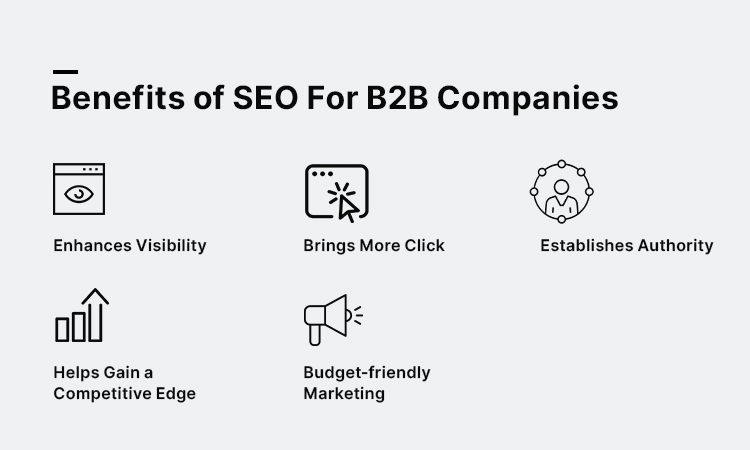
If you are running a B2B website, then your website will act as a digital storefront for attracting prospects and converting them into clients. This is why it has become important to optimize your website for SEO to bring more success to the business.
Read out to know some other reasons why SEO is significant for B2B websites:
- Enhances Visibility
Proper implementation of SEO on websites ensures that your business makes its appearance in the relevant search results. Thus, it enhances the chance of attracting potential B2B clients to the site.
- Brings More Click
With the help of continuous SEO efforts, the B2B website gets optimized for specific keywords. This makes it easier for the search engines to grasp your content and analyze where it should be placed in the search results. Thus, SEO helps in driving quality organic traffic to the site for specific search queries.
- Establishes Authority
SEO improves the positioning of your business in search engine results. By improving your website’s ranking in search engines, SEO establishes your business as an authoritative one in the eyes of the audience. Thus, it helps in building credibility among your target audience.
- Helps Gain a Competitive Edge
By adapting to the latest SEO trends and continuous SEO efforts, your business gains a competitive edge amongst others in the same industry. As SEO helps your business gain more visibility in the search engines, it can also lead to higher click-through rates and more conversions.
- Budget-friendly Marketing
In comparison to other marketing tactics like PPC, search engine optimization offers a more cost-effective approach to reaching B2B clients. Thus, SEO helps businesses gain higher returns on investments.
How is B2B SEO Different from B2C SEO?
When a search engine algorithm is taken into consideration, there is no difference between B2B and B2C SEO. However, in practice, B2B SEO is quite different from that of B2C SEO.
Let’s take a look at some factors that clearly differentiate a B2B SEO strategy from a B2C SEO.
- Target Audience
The target audience of B2B companies are usually a small group of key decision-makers. However, for B2C sites, the target audience is quite broad and involves a large audience of individuals who like to shop.
- Content Creation
B2B companies generally target CEOs, marketing managers, or any decision-making groups. So, here, the content published is specially created by keeping in mind their search queries and search intent.
On the other hand, B2C companies target a broader range of audience. So, the content published on these sites matches the search intent of these audiences.
- Marketing Channels
B2B companies involve companies and stakeholders. Thus, their corporate decision-makers need more trust to make a purchase. Before making their purchasing decision, they might follow a well-thought-out newsletter, valuable guides, or weekly webinars with relevant industry leaders.
However, B2C companies usually target a broader range of audience. Their purchasing decisions can be based on seeing social media posts on Instagram or Facebook. So, they mostly utilize social media marketing.
- Focus Keywords
In B2B SEO, the focus keywords are usually industry-related, as they involve businesses. However, when it comes to B2C SEO, the target keyword is mostly generic, as people usually search for it.
Also, the keywords for B2B companies usually have higher CPCs than B2C keywords because they possess a high commercial intent.
8 Steps to Create an Effective B2B SEO Strategy
Creating an effective SEO strategy for B2B companies that can help your business gain enough revenue is not that easy. You need to identify and decide the marketing goals that you want to achieve with SEO.
Once you have done so, get ready to create a customized SEO strategy for your B2B company. For that, you need to follow the steps one-by-one provided hereunder.
- Create Buyer Personas
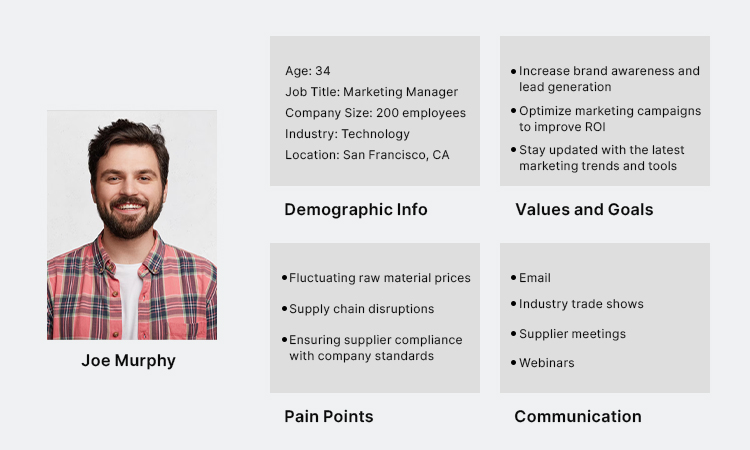
A buyer persona refers to a fictional depiction of how an ideal customer can be. These personas ideally represent the requirements and pain points of every possible member of the target audience.
These buyer personas help in understanding the behavioral patterns of the ideal customers.You can analyze these B2B buyers based on their demographics, objectives that they are willing to achieve, their budget. Therefore, it is crucial for B2B SEO to develop these buyer personas.
In order to create these, conduct extensive competitor’s analysis and have a look at their existing customer profiles.
The more information you get about the audience and their requirements, the easier it will be for you to target them and address their concerns. These user personas vary at the different stages of the sales funnel.
- Acknowledge the Complexities of Sales Funnel
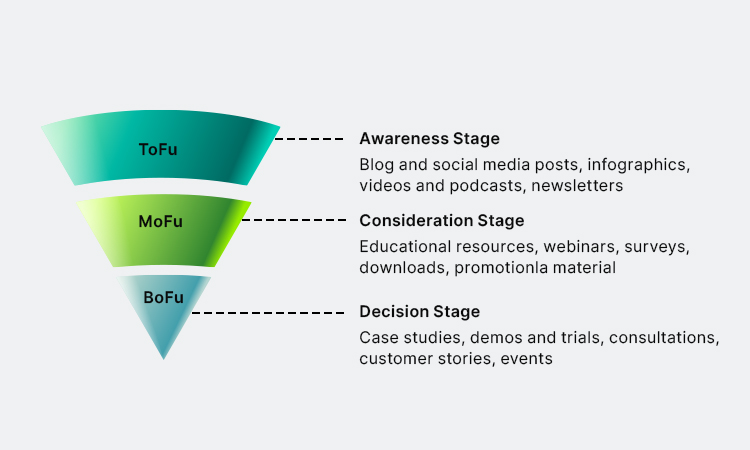
Another critical step that you cannot afford to miss is figuring out how your business’s sales funnel actually works.
A sales funnel describes the complete journey that the prospects undergo until they become customers. This sales funnel is divided into three stages- ToFu (Top of the Funnel), MoFu (Middle of the Funnel), and BoFu (Bottom of the Funnel).
In the ToFu stage, whatever issues the user faces are usually discussed, while in the MoFu stage, the discussion involves sharing information about your brand, business, and solutions. In the BoFu stage, the content discusses how your products or services address the specific concerns and needs of the prospective buyers.
By analyzing this sales funnel, you can visualize the overall customer’s journey. If you are not aware of the process of analyzing the sales funnel, then start with these steps.
- Discuss with the sales team regarding the funnel, its working procedure, and some of its significant touchpoints
- Figure out some key statistics related to this like average customer retention, time to purchase, customer lifetime value, etc.
- Now, delve into your business’s marketing and sales data to identify how the target customers are finding your business online.
Having a sound understanding of this sales funnel will help further in keyword research, content marketing, choosing appropriate marketing channels, etc.
- Perform Keyword Research
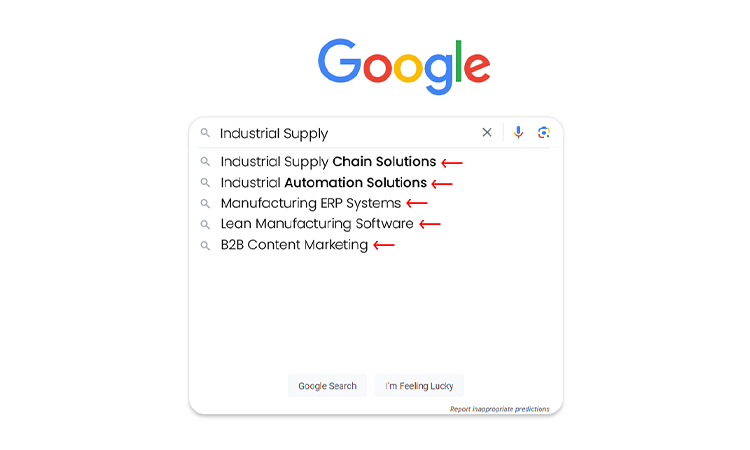
Once you understand your ideal customers and sales funnel, the next step involves conducting keyword research. It refers to the process of figuring out the relevant search terms that your target audience is searching for.
While performing keyword research, it is essential to figure out the search queries that potential customers are using to look for businesses like yours.
You can do so by typing the ‘seed keyword’ in any of the keyword-researching SEO tools like Ahrefs, SEMrush, etc. These tools suggest multiple keyword ideas that are relevant to the business.
You can group these relevant keywords according to their search intent to target buyers at different stages of the funnel. Apart from this, ensure to target long-tail keywords for more effective targeting and establish the content pillars.
- Optimize Product and Services Pages

Product & service pages are one of the strongest pillars on which any form of marketing stands, and SEO for b2b companies is no exception. Hence, optimizing these pages with SEO best practices is of primary importance. Well-crafted web pages create the best impression that attracts other brands to do business with you.
These are pillar pages that put out valuable information about your brand. Hence, it would be detailed, professional and to the point. Do not skip infusing a CTA that propels visitors to take desired actions.
Optimizing landing pages is a significant SEO strategy as they yield the power to pique interest in website visitors, which increases dwell time. A higher on-page time signals positive user behavior, which in turn influences the search rankings.
In order to create a strong landing page, follow these tips:
- Add crisp and clear pieces of content that are easily digestible
- Ensure visual appeal of the web pages
- Ensure to include a proper call-to-action in it
- The product and service descriptions should be clear and concise with no added fillers
- Include internal links in it (if possible)
- Include emotional triggers strategically into it
- The service or product pages must include the primary keyword
- Pay Attention to On Page SEO
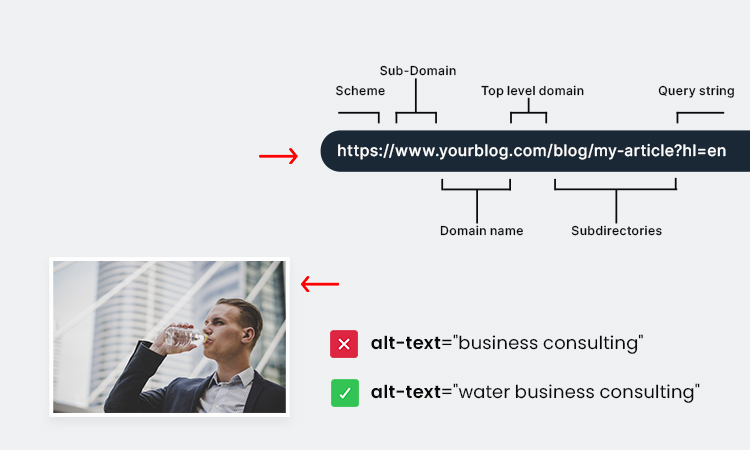
On-page SEO involves a series of optimization techniques that are performed on the web pages to improve its search engine’s visibility and rankings. These optimization techniques help your site rank higher for specific keywords in the organic search results.
So, on-page optimization starts with choosing the target keyword for the individual web pages. Followed by this, the other on-page elements of the site also get optimized.
Check out these key steps to improve the on-page elements of the site:
- Craft unique title tags
- Limit the title tags to 60 characters
- Optimize meta description with keywords
- Include keywords in the URL
- Craft high quality content that includes internal and external links
- Use heading tags to structure the content
- Optimize image alt tags
- Include images for better user attention
- Craft a Content Marketing Strategy

Crafting a scalable content strategy is undeniably important for B2B SEO as it can drive more visibility to the site. If you want to scale the growth of your business, then ensure to make the content stylistically and visually appealing so that it attracts the audience.
When it comes to B2B marketing, your prospects do not involve potential customers but an array of decision-makers. This means you should focus on creating relevant content that can help you get on their radar at different stages of the funnel.
Ensure to create content that can convince people and engage them even at the awareness and interest stages. Whether it’s a short-form or a long-form content, it must introduce the prospects to the business or resolve their queries regarding the business.
You can start by getting enough content ideas on business-related topics and subtopics. The content should be focused on target keywords with low difficulty and high search volume.
Though the ideal format of B2B content marketing depends upon the target audience, here are some formats that are worth considering;
- Blog post
- Videos
- Webinars
- Research Studies
- Podcasts
- Whitepapers and e-books
- Case Studies
- Checklists and Templates
- Newsletters and Tools
Regardless of the content type, the key is to always provide value to the user. Therefore, the content should be purposeful, hit all stages of the sales funnel, and guide your audience through their buyer’s journey.
- Off-Page Optimization
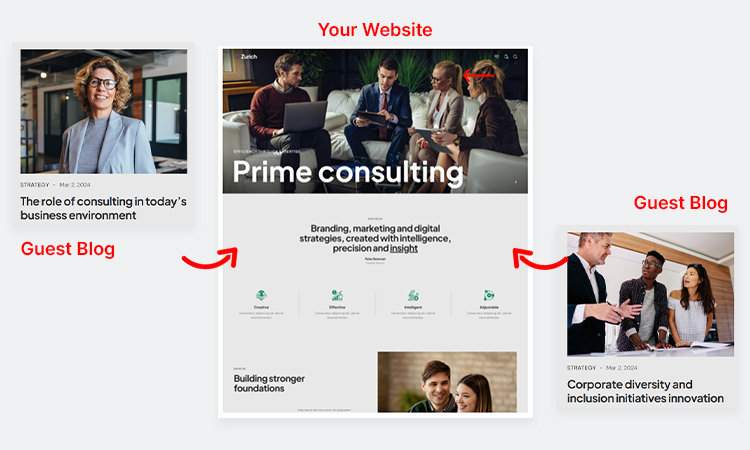
While performing SEO for B2B companies, one cannot forget the importance of off-page strategies. Off-page SEO involves off-site search engine optimization techniques that improve the rankings of the website in relevant search results.
One of the most common techniques involves link building. Link building tactics play a massive role in increasing business exposure, winning referral traffic, and building strategic relationships with others in the same industry.
Have a look at some of the link building tactics that experts use to add credibility to the B2B companies:
- Brand mentions
- Guest posts
- Press releases
- Roundup articles
- Conferences
- Partnership with vendors
- B2B podcast interviews
Earning quality backlinks from authoritative B2B domains helps improve brand awareness and gain recognition. Thus, these off-page SEO strategies are essential to the success of B2B companies.
- Perform Technical SEO Audit
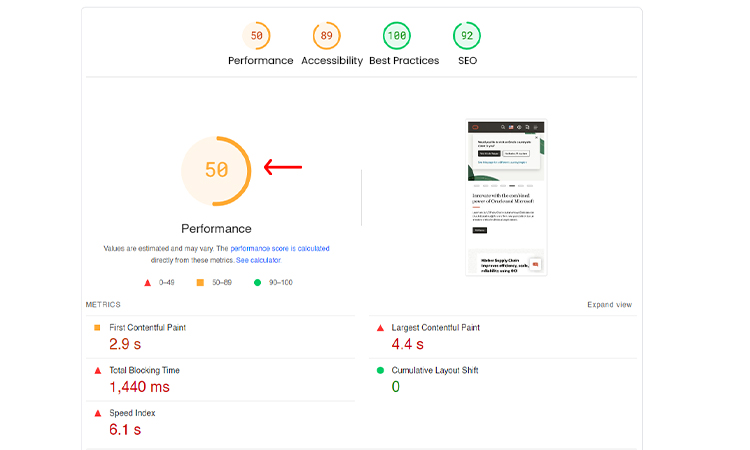
Conducting technical SEO audits is essential while performing SEO for B2B companies. It helps identify the issues that the B2B website might have and highlights the areas that need special attention.
Reviewing these fixes can help make your B2B site fully responsive and improve its search rankings on Google. However, performing this technical SEO audit involves checking and reviewing all the technical aspects of the website.
Have a look at some important steps to performing a technical SEO audit of the B2B website.
- Check for 404 errors on the site (due to broken links) and fix it
- Perform an XML sitemap audit and make sure that it’s updated with relevant modifications
- Check whether the B2B website is secured with HTTPS.
- Review and remove the toxic backlinks to the site
- Review the site speed and make sure that the B2B site loads fast
- Audit the URL canonicals and fix them to avoid any penalties for duplication
- Audit and ensure the mobile-friendliness of the site
- Ensure that the site successfully passes Google’s Core Web Vitals assessment
You can also conduct a technical SEO audit by using some analytics tools, be it Google Search Console, Google Analytics, etc. Make sure that these tools are helping with tracking the real-time performance of the web pages in the search engine results.
Wrapping Up
Almost every successful B2B digital marketing strategy has SEO as their backbone. With the help of these SEO strategies, B2B companies can favorably bring success to their business. But this is only possible if the strategies are effectively created by professionals with enough SEO knowledge.
If you have mastered SEO basics, then implementing SEO for B2B companies will be much easier by following the steps discussed above. However, if you want to optimize your B2B site to its full potential, then it will be a wiser option to rely on reputed SEO company.
As their SEO experts are experienced in the B2B industry, they can help you with creating cutting-edge SEO strategies. These strategies can help elevate your B2B company to a superior level of success and growth.


